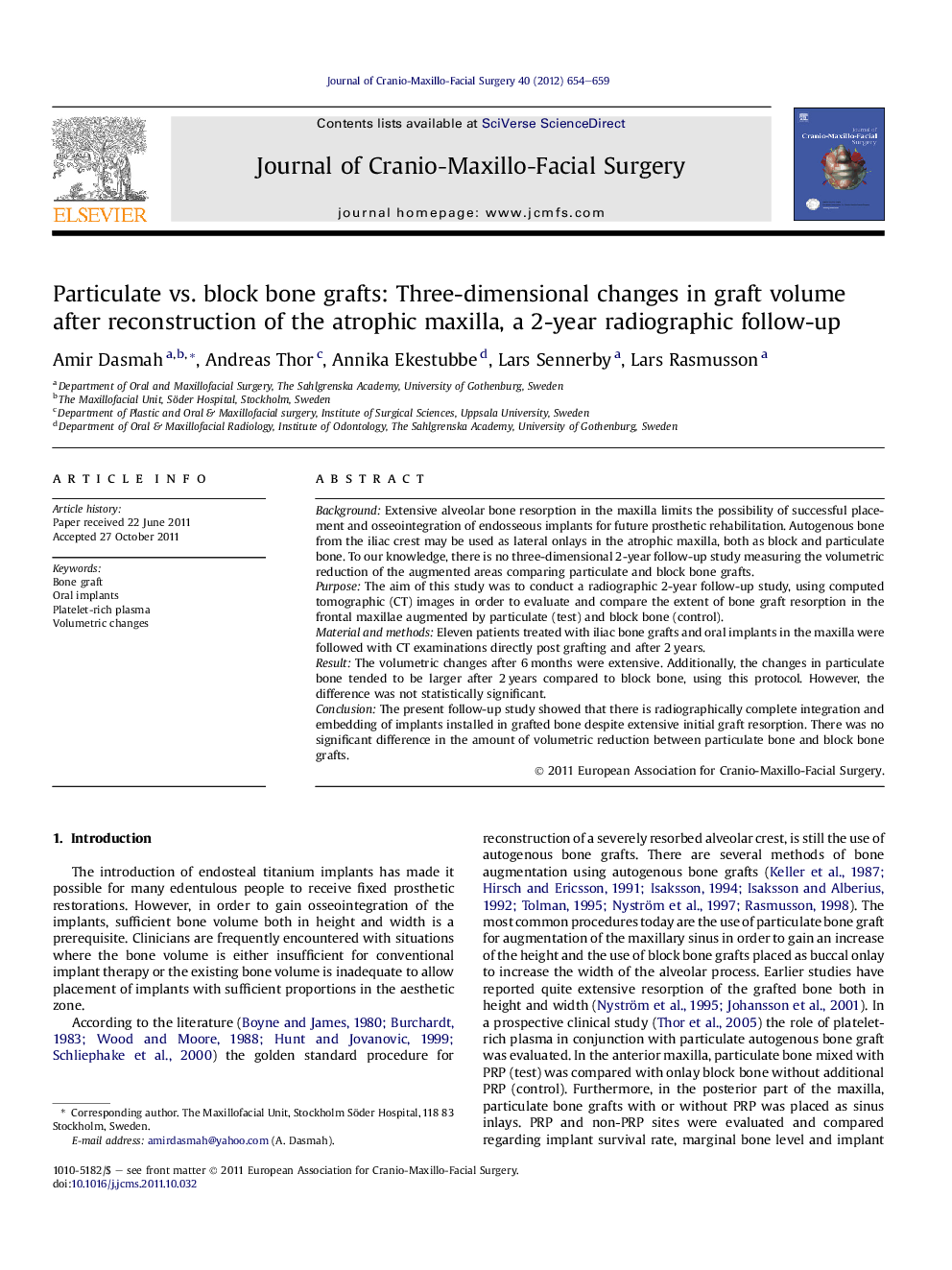| Article ID | Journal | Published Year | Pages | File Type |
|---|---|---|---|---|
| 3143363 | Journal of Cranio-Maxillofacial Surgery | 2012 | 6 Pages |
BackgroundExtensive alveolar bone resorption in the maxilla limits the possibility of successful placement and osseointegration of endosseous implants for future prosthetic rehabilitation. Autogenous bone from the iliac crest may be used as lateral onlays in the atrophic maxilla, both as block and particulate bone. To our knowledge, there is no three-dimensional 2-year follow-up study measuring the volumetric reduction of the augmented areas comparing particulate and block bone grafts.PurposeThe aim of this study was to conduct a radiographic 2-year follow-up study, using computed tomographic (CT) images in order to evaluate and compare the extent of bone graft resorption in the frontal maxillae augmented by particulate (test) and block bone (control).Material and methodsEleven patients treated with iliac bone grafts and oral implants in the maxilla were followed with CT examinations directly post grafting and after 2 years.ResultThe volumetric changes after 6 months were extensive. Additionally, the changes in particulate bone tended to be larger after 2 years compared to block bone, using this protocol. However, the difference was not statistically significant.ConclusionThe present follow-up study showed that there is radiographically complete integration and embedding of implants installed in grafted bone despite extensive initial graft resorption. There was no significant difference in the amount of volumetric reduction between particulate bone and block bone grafts.
